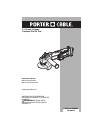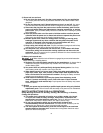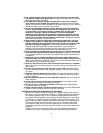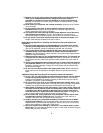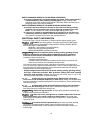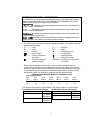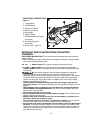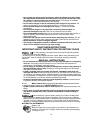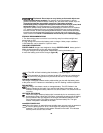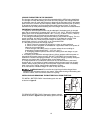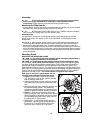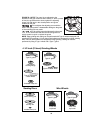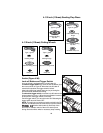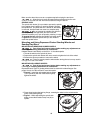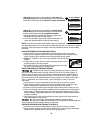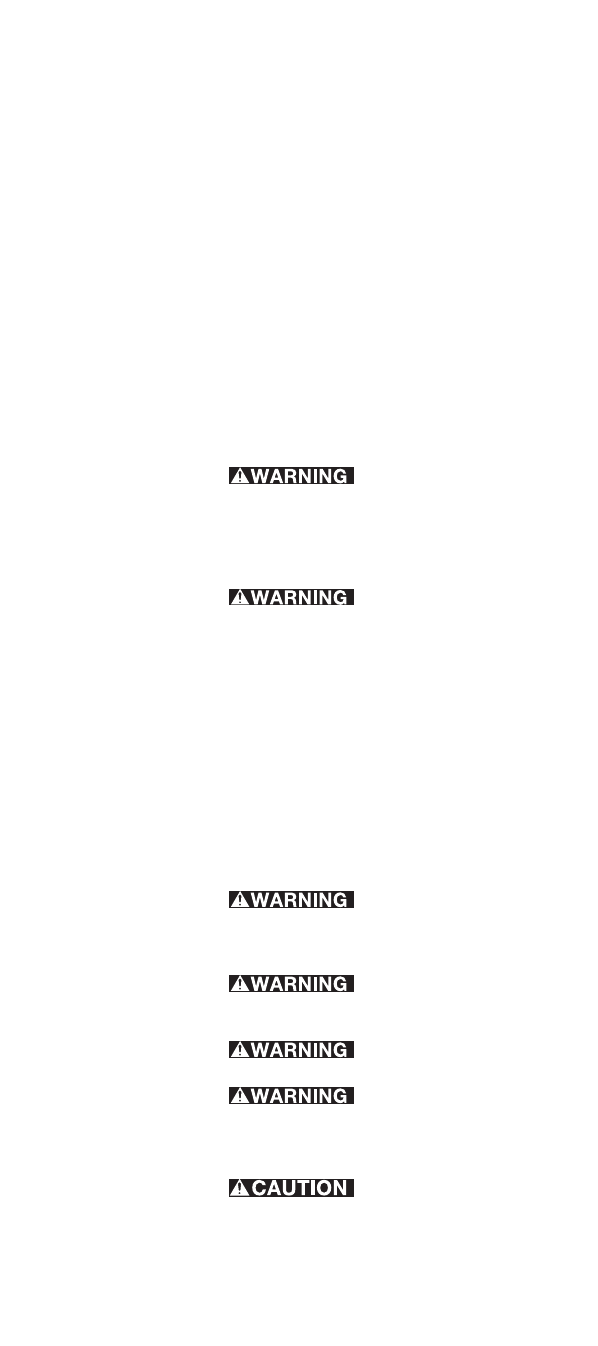
6
SAFETY WARNINGS SPECIFIC FOR SANDING OPERATIONS
a) Do not use excessively oversized sanding disc paper. Follow manufacturers
recommendations, when selecting sanding paper. Larger sanding paper
extending beyond the sanding pad presents a laceration hazard and may cause
snagging, tearing of the disc or kickback.
SAFETY WARNINGS SPECIFIC FOR WIRE BRUSHING OPERATIONS
a) Be aware that wire bristles are thrown by the brush even during ordinary
operation. Do not overstress the wires by applying excessive load to the
brush. The wire bristles can easily penetrate light clothing and/or skin.
b) If the use of a guard is recommended for wire brushing, do not allow any
interference of the wire wheel or brush with the guard. Wire wheel or brush
may expand in diameter due to work and centrifugal forces.
ADDITIONAL SAFETY INFORMATION
• Do not use Type 1 flat cut-off abrasive or diamond wheels without proper guard.
ALWAYS use safety glasses. Everyday eyeglasses are NOT safety
glasses. Also use face or dust mask if cutting operation is dusty. ALWAYS WEAR
CERTIFIED SAFETY EQUIPMENT:
• ANSI Z87.1 eye protection (CAN/CSA Z94.3),
• ANSI S12.6 (S3.19) hearing protection,
• NIOSH/OSHA/MSHA respiratory protection.
Some dust created by power sanding, sawing, grinding, drilling,
and other construction activities contains chemicals known to the State of
California to cause cancer, birth defects or other reproductive harm. Some
examples of these chemicals are:
• lead from lead-based paints,
• crystalline silica from bricks and cement and other masonry products, and
• arsenic and chromium from chemically-treated lumber.
Your risk from these exposures varies, depending on how often you do this type of
work. To reduce your exposure to these chemicals: work in a well ventilated area, and
work with approved safety equipment, such as those dust masks that are specially
designed to filter out microscopic particles.
• Avoid prolonged contact with dust from power sanding, sawing, grinding, drilling,
and other construction activities. Wear protective clothing and wash exposed
areas with soap and water. Allowing dust to get into your mouth, eyes, or lay on the
skin may promote absorption of harmful chemicals.
Use of this tool can generate and/or disperse dust, which may
cause serious and permanent respiratory or other injury. Always use NIOSH/OSHA
approved respiratory protection appropriate for the dust exposure. Direct particles away
from face and body.
Always wear proper personal hearing protection that conforms to
ANSI S12.6 (S3.19) during use. Under some conditions and duration of use, noise
from this product may contribute to hearing loss.
Always use eye protection. All users and bystanders must wear eye
protection that conforms to ANSI Z87.1.
When not in use, place grinder on a stable surface where it will not
move inadvertently, roll or cause a tripping or falling hazard. The grinder may
stand upright on the battery pack but may be easily knocked over. Serious personal
injury may result.
To reduce the risk of personal injury, use extra care when working
into a corner or edge because a sudden, sharp movement of the tool may be
experienced when the wheel or other accessory contacts a secondary surface or a
surface edge.
:
:
:
:
:
:
:



